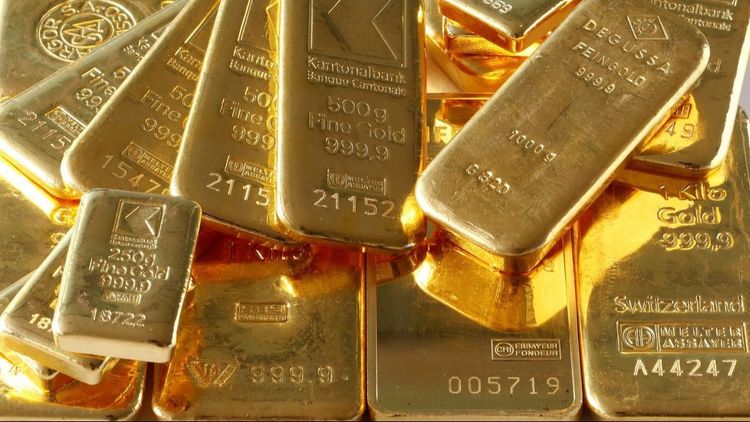Gold rates today: Demand from China, geopolitical risks driving ...

Gold prices on Friday morning hit a new lifetime high of Rs 72,678 per 10 grams. Around 9.45 am on Frday, the June futures were trading at Rs 72,448, rising Rs 804. Today's rally was on the back of softer US PPI inflation data that lifted sentiments for bullion on the Street. Gold prices have surged in recent months, climbing by almost 28% to $2387 per ounce.
Investors view gold as a safe haven during turmoil and a hedge against currency devaluation. The recent increase in gold prices is attributed to the conflicts in the Middle East and Ukraine, as well as the post-COVID inflation surge.
But the recent rally has another major factor. Beijing has been on a gold-buying spree. For 16 consecutive months, the People's Bank of China (PBC) has been increasing its gold reserves, surpassing all other central banks in 2023. China's purchases amounted to 225 metric tons last year, a significant portion of the total 1,037 tons bought globally. In just January and February, the PBC added 22 tons to its reserves.
On the recent rally, Christopher Wood, Jefferies' global head of equity strategy, said the sudden increase is due to Chinese demand and a lack of investor enthusiasm for gold. This trend reflects shifting market dynamics and investor sentiment towards the precious metal.
Wood, in a note -- Greed and Fear, said: “Recent developments show a distinct lack of investor euphoria as regards gold, the question remains what is driving the current rally. The most plausible explanation remains demand from China. Still there is a lack of concrete data to confirm such an explanation. According to the official foreign reserves data, the PBOC has bought gold for 17 months in a row.”
China's official gold reserves grew by 314 tonnes, a 16.1% rise from 1,948 tonnes in October 2022 to 2,262 tonnes in March 2024. Gold imports to China surged by 53% year-on-year to 372 tonnes in the initial two months of 2024. China's central bank now holds roughly 2,257 tons of gold in its vaults, as per estimates.
Wood explained that though the price of gold rises when inflation spikes. Although inflation has been on the rise globally, the pace of the overall price rise has cooled down. But at the same time, there's no slowdown in the price of gold, he noted.
Factors supporting the buying spree include geopolitics and actions of the US Federal Reserve to manage inflation and interest rates, as per the World Gold Council (EGC). Geopolitical Risk index rose due to tensions on various fronts, as reported by the WGC.
Besides, Chinese demand, there was a notable lack of inflows into gold ETFs in the Western world, Wood noted. Gold ETFs’ holdings have declined by 120 tonnes year to date to 2,542 tonnes as of Wednesday following a decline of 254 tonnes in 2023, according to Bloomberg.
The physical premium on gold bars and coins traded in Singapore are at only a normal 1-2% compared with the 7-8% levels seen at the peak of the last bull market in 2011 and 2012, Wood further said.
Risks around price rally
While Wood is impressed that gold has broken out to new highs without any corroborating evidence of ETF inflows in the Western world, the biggest risk, he believes, are 'official attempts' to puncture this rally in gold prices.
"While this latter point clearly highlights that there is a risk to the current rally, as does the fact that net long gold speculative positions held by money managers such as hedge funds are up from to 46,400 contracts in mid-February to 178,213 contracts in the week ended April 2, probably the biggest risk remains official attempts to manage the price down," Wood wrote.
Why is China buying so much gold?
China heavily depends on the US dollar for global trade. Being the primary reserve currency, most commodities are priced in dollars, and over half of worldwide trade is transacted in this currency. Despite challenging the US's economic supremacy in the last 30 years, China has amassed significant foreign exchange reserves, predominantly in dollars.
Beijing is concerned about its heavy reliance on the US dollar and aims to diversify the PBC's reserves. China has been steadily decreasing its holdings, which have dropped by a third since 2011 to approximately $800 billion, as per US data.
The aim of diversification is in line with that of other BRICS countries (Brazil, Russia, India, China, and South Africa), whose economies are expected to lead the global economy by 2050. The BRICS have discussed the possibility of introducing a common currency that might rival the dollar as the world's reserve currency.
Earlier this month, Reserve Bank Governor Shaktikanta Das said India has been building up gold reserves as part of its forex deployment. "We are building up gold reserves that is a part of our reserve deployment," Governor Das told reporters at the customary post-policy review press conference.
He did not give any specifics on the quantum of gold buys, but pointed to the official data which shows an increase in the value of gold reserves.
As per official data, the value of gold in the forex reserves stood at $51.487 billion as on March 22, which is $6.287 billion higher than the value as at end-March 2023.
As per a recent news report, RBI bought 8.7 tonne of gold in January alone which is the highest in two years.
The central bank's gold holdings had touched 812.3 tonne at the end of January from 803.58 tonne in the preceding month, as per the World Gold Council. The price of gold has also seen a rally over the last few months.























































